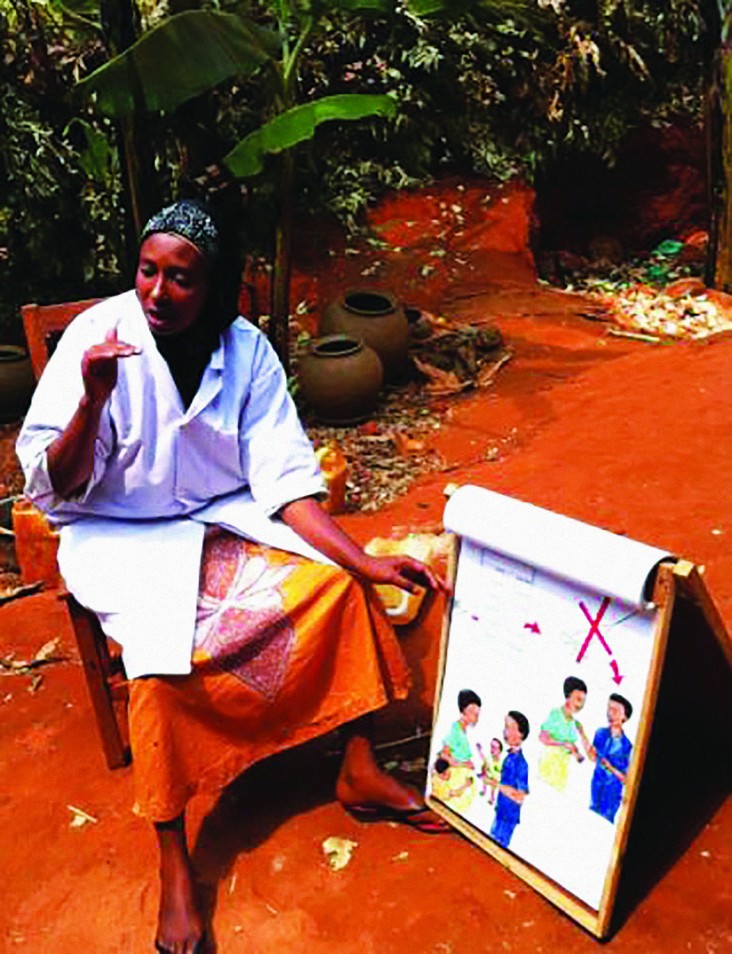- Work With USAID
- How to Work with USAID
- Organizations That Work With USAID
- Find a Funding Opportunity
- Resources for Partners
- Careers
- Get Involved
Speeches Shim

Background
The Integrated Birth Spacing Project was a two and a half year project funded by USAID/PRH Flexible Fund, and implemented by World Vision. The project demonstrated how Healthy Timing and Spacing of Pregnancy (HTSP) messages and Family Planning (FP) services can be integrated into maternal and child health projects at the community level, often with the support of faith leaders. The project was focused around three integrated strategies: advocacy, commu-nity mobilization; and resource mobilization.
1) Advocacy—World Vision staff worked with community influencers to spread HTSP messages.
2) Community Mobilization—Messages were spread during community gatherings, such as football games, and volunteers assisted at village Health Huts to provide counseling, pills, condoms, and referrals to the Ministry of Health’s (MOH) Health Posts. Each Health Hut served approximately 1,000 people per community.
3) Resource Mobilization—Training of health workers in family planning counseling and services was a main focus. MOH staff provided condoms, pills, and intrauterine devices (IUDs) at Health Huts for no extra cost to users while nurses trained village health committees on the benefits of HTSP.
Faith-Based and Community Initiatives
In the advocacy component of the project, local influ-encers including imams, village leaders, grandmothers, fathers, and mothers helped advocate for HTSP messaging among their communities. Through this approach the targeted communities learned that the timing and spacing of births could lower mortality, and became strong supporters of HTSP to improve the health of infants, mothers, and families. World Vision also worked with Catholic sisters at three health posts. These sisters counseled clients on the Lactational Amenorrhea Method, the Standard Days Method, and referred clients to health posts for other methods. Faith leaders were critical to this project’s success since they can help transform community behaviors.
Results
At the end of the project, 85 percent of facilities offered three or more family planning methods, 100 percent of health huts had no stock outs of family planning supplies, and the contraceptive prevalence rate increased to 9–17 percent (where the national prevalence rate at baseline was 12 percent with just 7 percent in rural areas).
Conclusion
Building constructive relationships with communities helped World Vision staff to generate a highly positive social environment for HTSP and FP. These strong ties enabled WV to discuss once sensitive issues around FP, openly and engagingly with faith leaders and communities. WV’s focus on faith leader involve-ment has facilitated this supportive environment. Along with a focus on men in communities, these champions were key in the permeation of HTSP message sharing and in sustaining behavioral change.
Recommendations include:
1. Involve faith leaders from the design stage of FP programs as this is pivotal for sustained messaging.
2. Use the health rationale as the basis for FP use to time and space pregnancies for improved health for mothers and children since communities value the health of mothers and children.
3. Partner with the MOH to ensure compliance with national standards and integration with national policies.

Comment
Make a general inquiry or suggest an improvement.